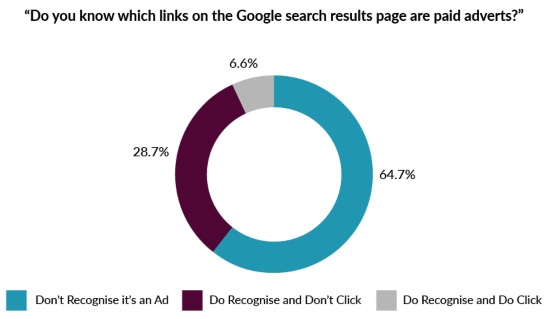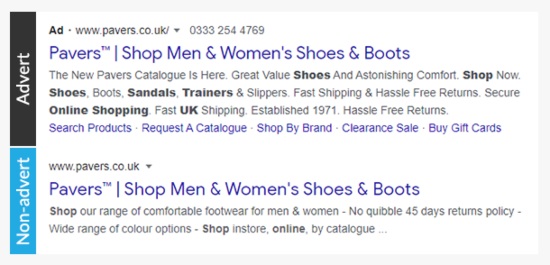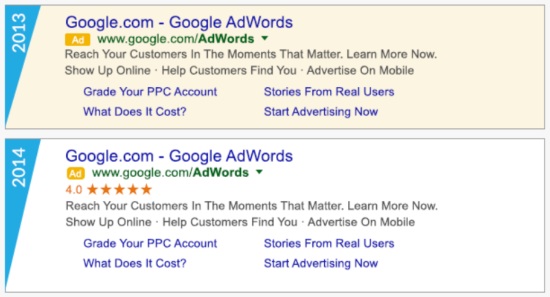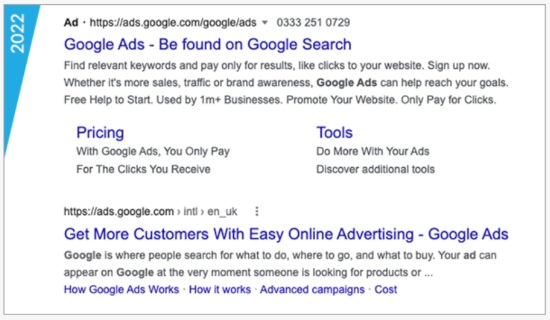Google Ads Survey
The debate about how to use organic and paid search has been raging for years, with many preferring one channel over the other. Paid search often gives a quicker return on investment while SEO proves much more cost-effective over the longer term.
Another smaller debate within the search marketing community is the visibility of ads within the search results pages across all search engines, but mainly Google. Many believe that the paid results are becoming less recognizable when compared to organic listings.
Recent research from Varn has uncovered that 64.7% of people do not recognize a Google Ad within the SERPs, and of the ones that do over 80% refuse to click on them.
Figure 1: Main results of the survey

The survey was conducted with over 1000 internet users to dive into the differences between Google Ads and organic search results, and how they were resonating with the general public. As shown above there are a lot of users who do recognize it as an ad and don’t click with a much smaller percentage of respondents recognizing ads and also clicking on them.
Are Google Ads becoming less visible?
The main Google search adverts typically show at the top of the page in Google when a user inputs a target search term, however, the styling of the ads has changed over time as the figures below show.
Figure 2 from Bristol based SEO agency Varn below shows a Google Ad when compared to an organic search result. As shown, there are callouts present in the ad, however, the styling is very similar, potentially feeding into the still present and large number of users who do not recognize them as Google Ads in the SERPs.
Figure 2: Differences between Google Ads and Organic search results

The styling has changed a lot, as figure 3 shows. Back in 2013 most ads had a slightly yellow tined background with a greater variety in colors and layout, as we have moved into 2020 and beyond the ‘Ad’ does seem to have gotten less prominent and more closely matches the styling of the rest of the SERPs as shown in figure 4.
The research from Varn has not been done in isolation; data has been collected over the last 6 years which has shown that whilst users are getting more use to Google, they are not getting much better at differentiating the paid listings from the organic ones. The percentage that does not recognize them has remained at between 57% and 64.7%, suggesting that formatting changes may be making the ads less recognizable in search.
Figure 3: 2013 vs 2014 Google Ad snippets

Figure 4: 2022 Google Ad snippet

The formatting of the ads is interesting when compared to other search engines like Yahoo, whilst the Google Ad does appear to be getting less recognizable, the Yahoo Ads appear even less prominent and individually are much closer to their organic search result counterparts. A quick search on Yahoo for car parts shows this.
What does this data mean for search marketing?
In terms of the impact from a search marketing perspective, the fact that those utilizing Google Ads could be missing out on over 80% of their potential market is certainly troubling, however, the data does suggest that for a typical website approximately 53% of traffic coming through organic sources and 27% comes from paid sources.
Google ads are still a great way to bridge the gap between your website and potential customers whilst you get your organic SEO underway and should be a part of your strategy going forward. The data uncovered in this research reaffirms what many have known for a long time in the search engine marketing industry, that a hybrid approach is ideal.
A hybrid approach that takes advantage of the prominence of Google Ads and combines that with a strong SEO strategy will help you get the most value for your search efforts, as you will be able to reach all the potential customers no matter what their preferred Google listing. Google Ads data can also give you valuable insights into your site conversions which can then feed into your organic search strategy.
